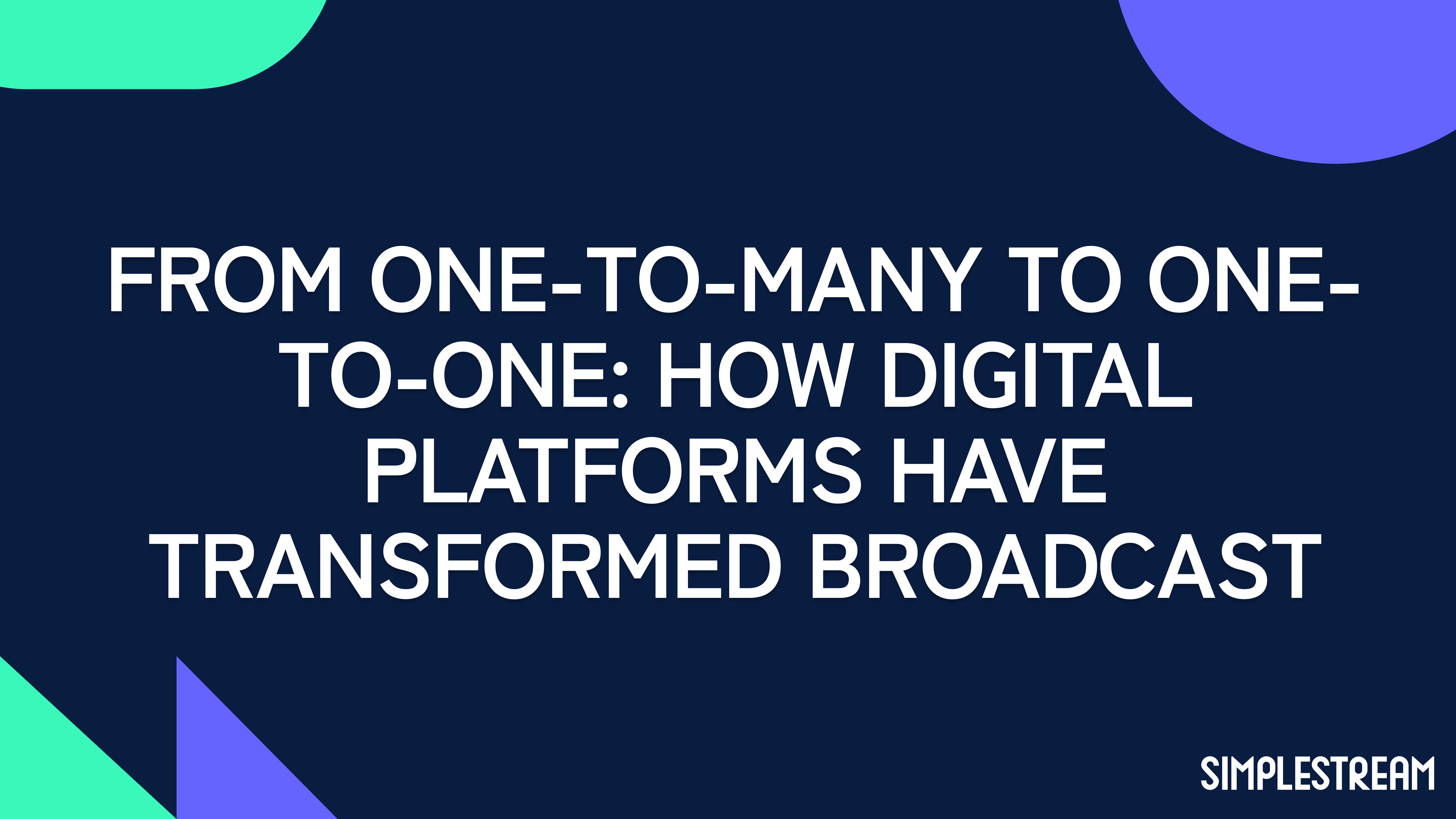Five ways to gamify your content
Gamification has been blurring the line between lean-back entertainment and the hands-on activity of gaming for a while now, here’s an overview of the different forms it can take in content.
Gamification has been around for much longer than the term itself was created (2002). It’s been applied to numerous streaming services and OTT platforms, such as Spotify and Netflix, but it also works with content. It’s not limited to entertainment; it finds use in education, marketing, health, and fitness too.

Gamifying content is big business, just look at platforms like Duolingo with its 37 million active monthly users. Why is it so successful? Well, a lot of people want to learn languages, and it’s made more fun with game-like elements where users complete levels and maintain learning streaks. Think about people you’ve seen playing games like Candy Crush on their smartphones, it’s probably a cross-section of society and not just children. Games are universal, and lots of us love to play. Rewarding people for completing challenges makes them feel triumphant, and that emotional response keeps them coming back for more.
Understanding how to gamify content is something else altogether, so we’re providing five simple examples to enhance your content. Read on to find out how, and who knows, someone might be referencing your app instead of Duolingo on an article just like this in years to come.
#1. Live streams and community
Content that’s delivered live has the added entertainment factor of watching ‘in the moment’. The risks are higher, and reactions are unscripted, with no room for editing. Twitch, the gaming live-streaming platform, sees 7.7 million streamers going live every month, with an average of 28 viewers for each streamer. The reason it draws so many viewers can be attributed to the gamified experience:
- Subscription tiers: viewers can choose to follow individual channels and streamers without paying, but there are additional upgrades they get with each tier if they do choose to pay.
- Stream chat: community is an important part of the gamified experience for viewers on Twitch. Being able to interact directly with the streamer themselves and fellow viewers creates that feeling, and makes the individual viewer feel as though they’re part of the experience.
- Points: a virtual currency which viewers can use to cheer in the stream chat, showing their support for the streamer. They’re essentially mini donations as viewers use real money to purchase these points, and a percentage is passed to the streamer when the viewer cheers.
Each of these examples amplify the experience for the viewer by providing a sense of community and offering something bigger and better each time they invest their time and money. In reality, gamifying your video streaming platform is pretty straightforward. Check out our guide to find out more.
#2. Education and learning made fun
Making learning fun is how you keep children engaged in education, but the same can be true for adults. Duolingo, as mentioned above, took a popular subject — language — and provided a fun environment where users could learn and progress their skills in easy bite-sized chunks every day. It’s clearly effective as the app draws 37 million active monthly users. TikTok is also appearing as a front-runner in short-form educational content, with the hashtag #LearnOnTikTok amassing 683.4 billion views to date. Some of the gamified features on Duolingo include:
- Learning streaks: these are maintained when a user completes their learning activity in a chosen language over consecutive days. By creating this sense of accomplishment and awarding the user with badges they can share, it ensures that they will continue to come back to the app every day.
- Game-like UI: the colour palette and interface design of the app itself are very much like a video game. Making the experience of learning in the app interactive and fun helps to keep people hooked.
- Competition: leaderboards and language leagues give users a sense of competition to encourage them to improve and progress their language skills. Experience points earnt from completing lessons and courses contribute to the user’s level and place.
Combining video with short daily courses and tasks and gamifying the experience could be effective for an educational video app.
#3. Kids-focused activities
Children love to play, so it’s natural that a platform which includes game elements would be more engaging to them. Integrating play elements such as art pads which allow children to express their creativity and take part in competitions in a safe environment can be a great tool for entertainment and education.

#4. Health and fitness
If you want an idea of the potential that health and fitness apps have for growth when incorporating gamification, just look at Strava. It’s the go-to app for those who like to keep fit and active, with 95 million registered users as of 2022. So why is it so widely adopted by fitness communities? The features and functionality are to thank for this, and here are a few of them:
- Leaderboards: fitness and sport is a place where most find that competition fuels motivation. Strava incorporates this feature for users, where they can compete with friends and the entire community on the app for specific running, hiking, and cycling routes. Users compete for virtual ‘medals’ as they compete for a spot on the podium.
- Challenges and progress bars: the app incorporates progress bars for measuring weekly and annual challenge progress. Users accept a challenge to be awarded either a virtual or sometimes physical prize upon completing it.
- Community interaction: arguably one of the most important aspects of Strava is its community. Users compete but also support one another as they work towards their fitness goals and personal records. This is also where users develop a sense of accountability beyond themselves, but also towards the community as a whole. There’s less chance of them missing that run or bike ride if their friends are counting on them and cheering them as they progress in the app.
#5. Virtual Reality and the Metaverse
Less and less a buzzword, and even more a reality — even if virtual — the Metaverse is here to stay. Products like the Apple Vision Pro point to a future where Augmented or Virtual Reality (AR, VR) and the Metaverse will be even more accessible. VR and AR offer a gamified experience as users interact physically with virtual or augmented environments, not to mention the plethora of game-like features which can be utilised to make these experiences engaging. Here are some examples of how AR and VR could be used:
- Immersive experiences: taking users beyond a two-dimensional experience and having them interact with virtual 3D objects is more immersive as they’re directly interacting with the content.
- Removing distractions: by taking users into a created world, there are fewer distractions for them to engage with, which would normally take them away from your content.
- Personal interaction: meeting with friends virtually is fairly normal now, but what about meeting at events that neither of you could attend in person? We spoke with Dan Finch, CCO at Simplestream, about the possibility of seeing real-world live events alongside friends by meeting in the Metaverse. Check out the podcast episode here to find out more.


